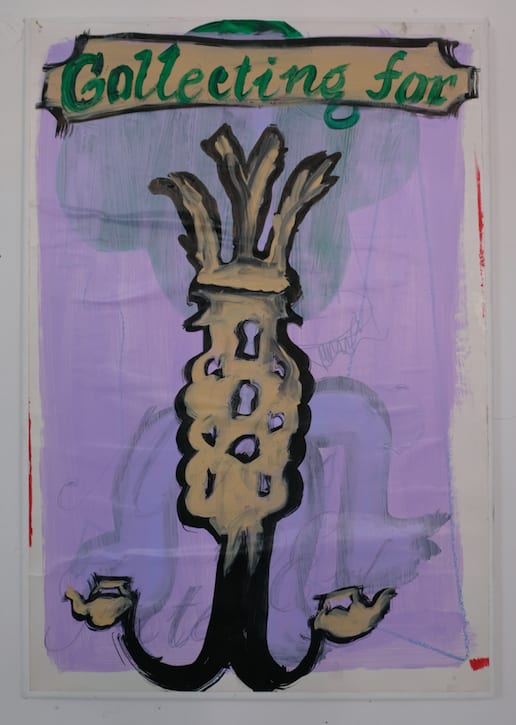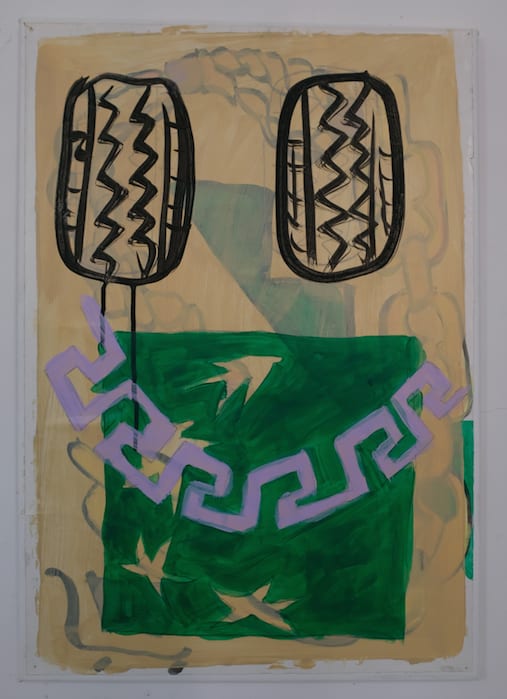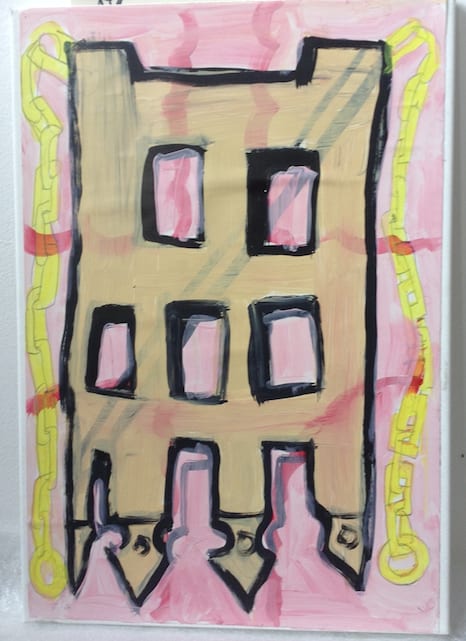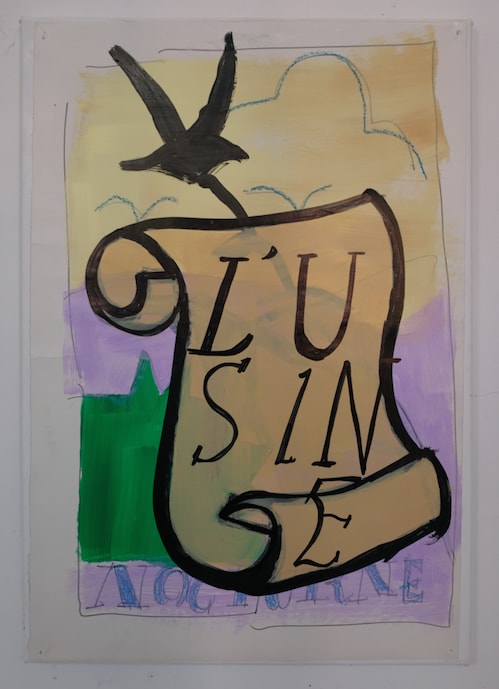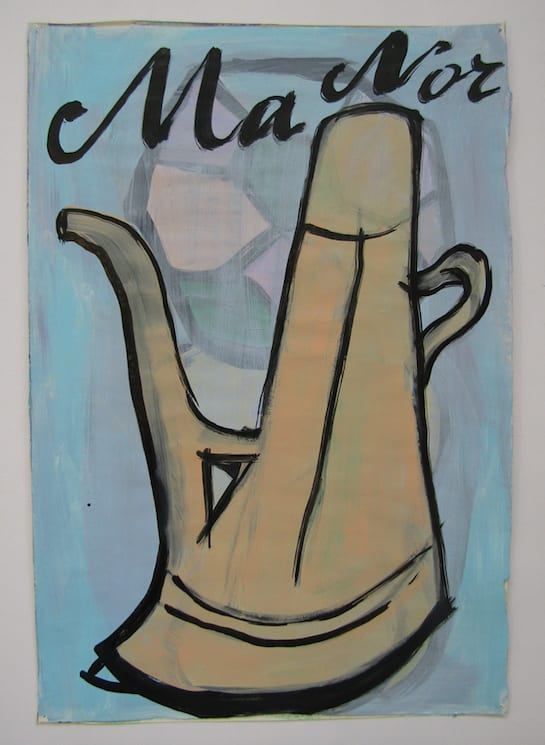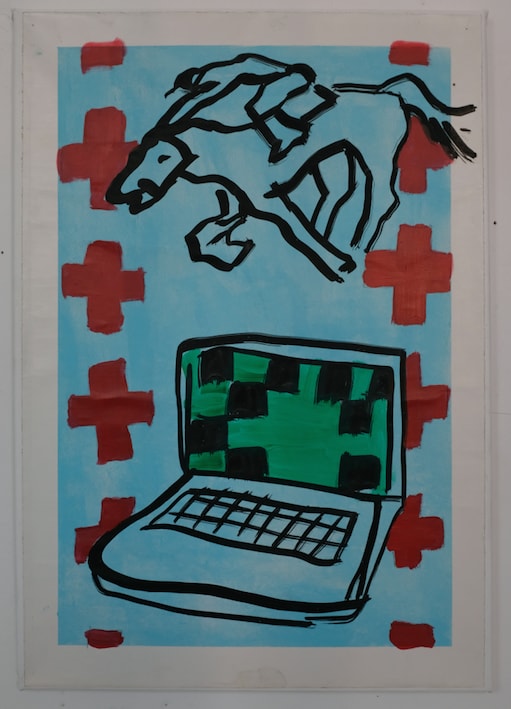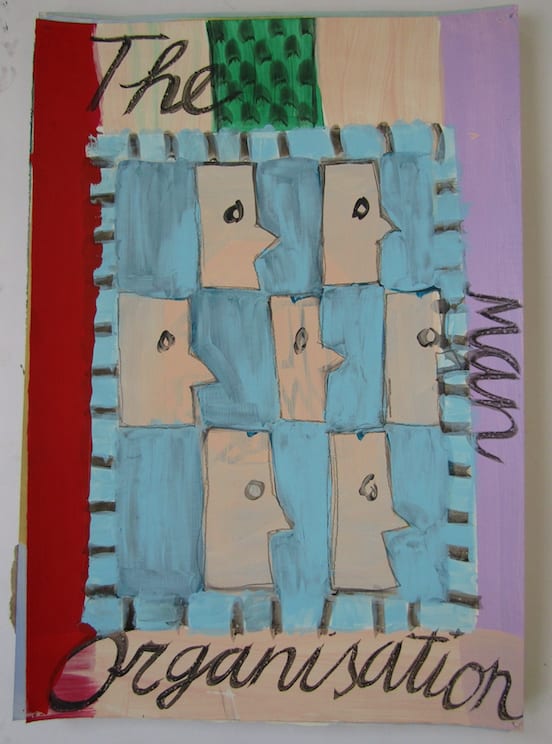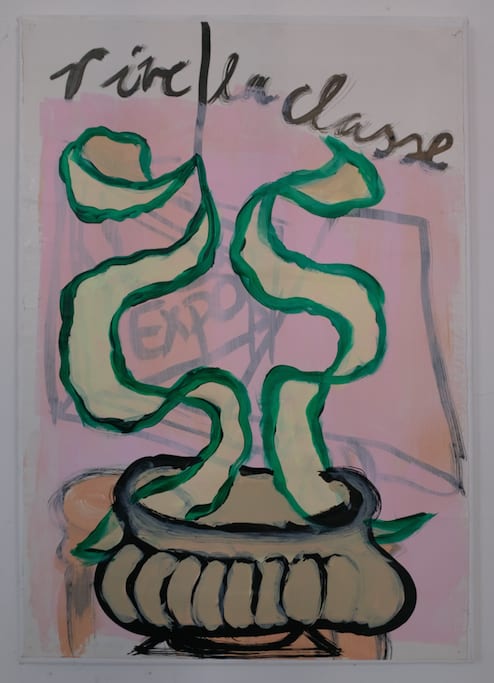Ines Claus: At The Wunderwall Antwerp
EuroMillions advertisements often focus on how winning will contribute to attaining authentic experiences. Traveling to paradisical places, sipping colorful cocktails on exclusive terrasses until we eventually—sauntering through the baroque streets of Italian villages—cross paths with exciting people destined to illuminate our life. Even falling in love seems easier with a bag of price money. Are these dreams only money can buy? Of course not, but in the end it’s all about spending, isn’t it? Then let’s madly embrace the believe that the things we acquire allow for symbolic renewal and elevate us above the person we were before, the person not living the dream. Once depicted, objects and forms start addressing each other as equals. Lines, words,
emblems hiding but their silhouettes. The drawings vainly carry their layers, show-off their trials and errors. They’re eulogies disinterested in pedestaling, testaments of a classless class, of ideology- free observing (if there were such a thing) blatantly enjoying. In the Euromillions drawings no pictorial distinction is made between a Tensoplast box, details of a Herme s piece or the frivolous aesthetic of medieval heraldry. Then again, the works are not proclaiming to cause a disruption in the ‘cultivated’ allures of aesthetic authorities. Forms now find their essence in attributing to the drawings’ ornamental play but, be that as it may, will always remember where they came from in the first place.
Oriana Lemmens & Nikolaas Verstraeten, February 2021.





